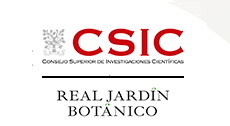Scientific Area
Abstract Detail
Nº613/811 - Using genomic data to inform taxonomy and conservation of rare plants
Format: ORAL
Authors
Mitchell McGlaughlin1, Samantha Naibauer1
Affiliations
1 University of Northern Colorado, Greeley, Colorado, USA
Abstract
Accurate taxonomic identification of rare plant species is essentialfor defining elements of biodiversity and directing conservation funding to protect that diversity.Recent advances in genetic data collection, particularly those utilizing next-generation DNA sequencing technologies, have increased the accuracy and speed of genetic studies, and has lowered the cost to generate robust genomic datasets.Genetic data provides a method to determine if species are distinct from close relatives, genetic structure of populations, and levels of genetic diversity within populations, independent of challenges associated with phenotypic plasticity, which can complicate analyses of plant morphology.However, many of these modern genetic tools remain focused on evolutionary studies and are not directly leveraged to support conservation. In this presentation, I will discuss collaborations between the University of Northern Colorado, the U.S. Fish and Wildlife Service, and the Colorado Bureau of Land Management as a model to support the collection of conservation focused genetic data. Supported studies have examined taxonomic uncertainty, defined management units, and increased our understanding species life history. Examples will focus on how genetic data has improved the allocation of conservation resources in Colorado, with studies that determined thatDraba weberi(Brassicaceae) is not a distinct species, that endangeredSclerocactus glaucus(Cactaceae) should be recognized as two species, and thatErythranthe gemmipara(Phrymaceae)is entirely clonal with a very uneven distribution of genetic diversity across the species range.Collectively, these results illustrate how agencies and researchers can collaborate to ensure that the taxonomy of plant species of concern is accurate and that conservation activities are targeted to species most in need.




